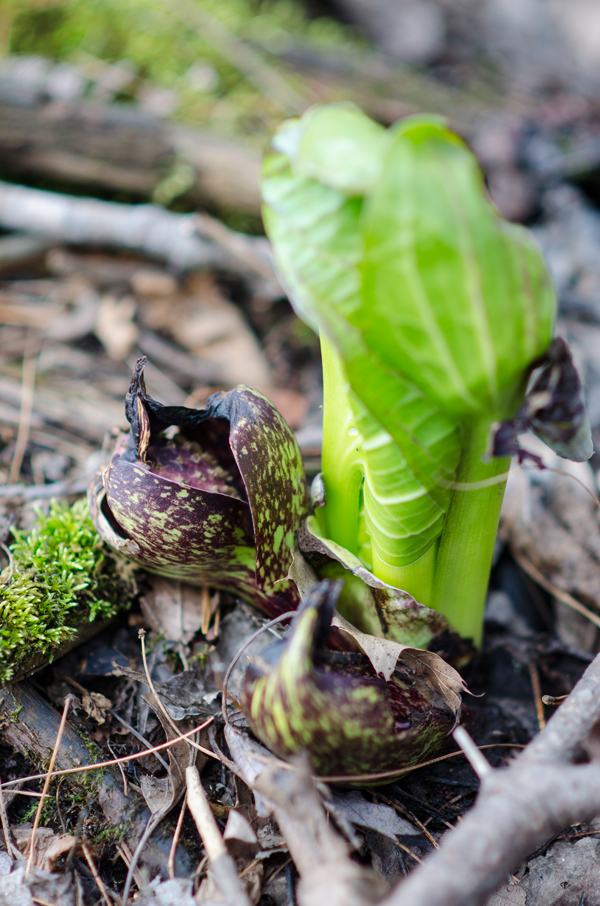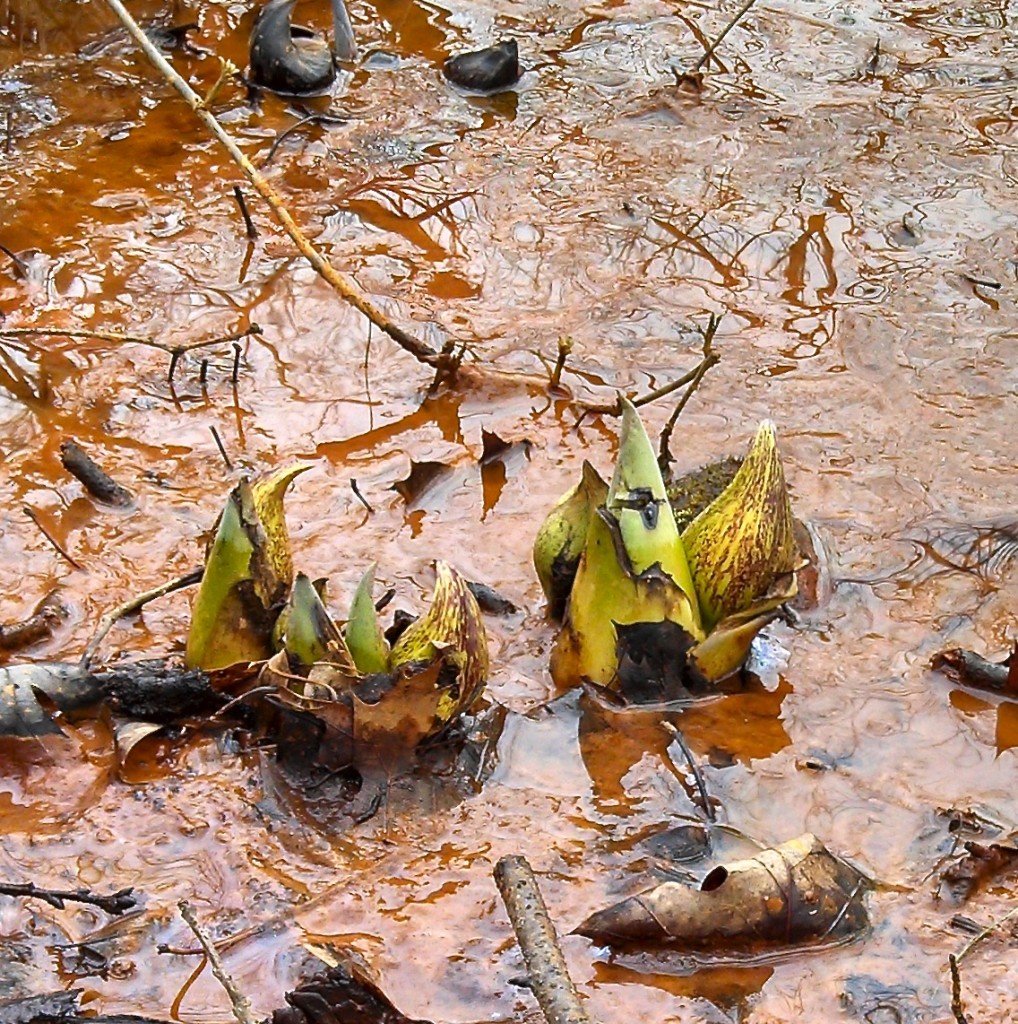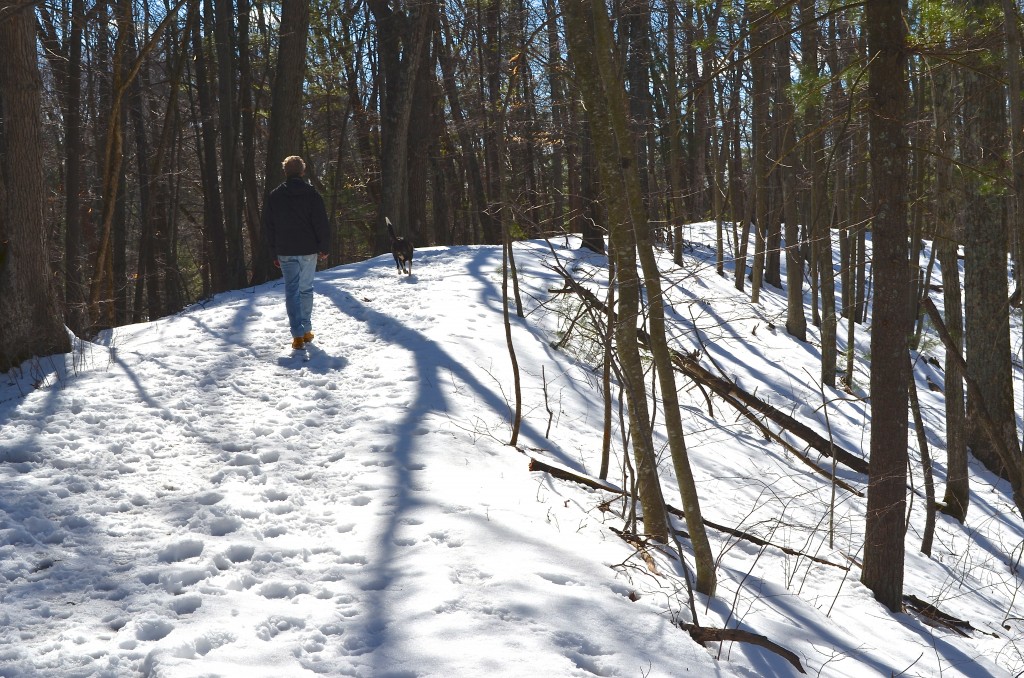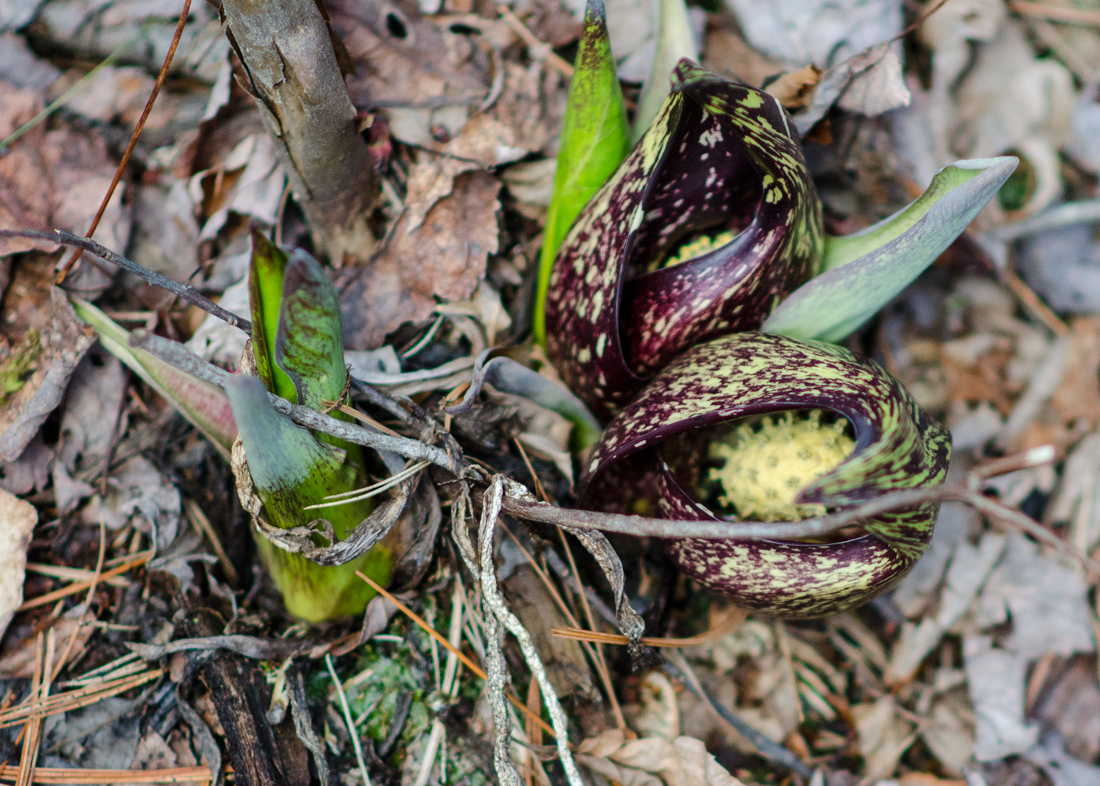 It was a mild winter. The skunk cabbage seemed to just survive the snow, with frost-blackened tips. In early April, creatures were waking up. Here, a skunk cabbage hood (spathe) showing the spadix inside (the flower head).
It was a mild winter. The skunk cabbage seemed to just survive the snow, with frost-blackened tips. In early April, creatures were waking up. Here, a skunk cabbage hood (spathe) showing the spadix inside (the flower head).
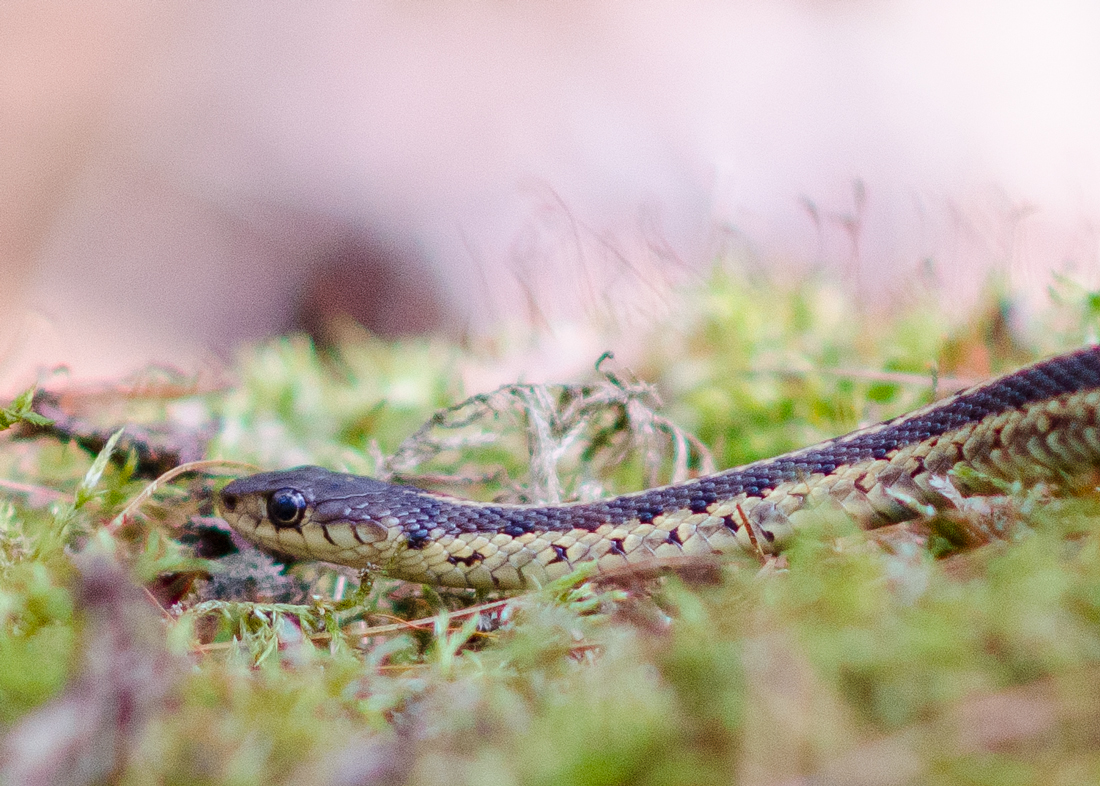 Also a garter snake adventuring, and best of all, there were a glorious few days of peepers. When I recorded this, they were so loud, and there were so many layers of sound, and individual voices. Wonderful. Not long after this, we had a spate of severe cold and snow and the peepers were noticeably quiet.
Also a garter snake adventuring, and best of all, there were a glorious few days of peepers. When I recorded this, they were so loud, and there were so many layers of sound, and individual voices. Wonderful. Not long after this, we had a spate of severe cold and snow and the peepers were noticeably quiet.

